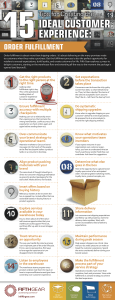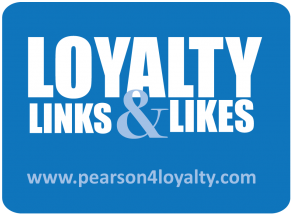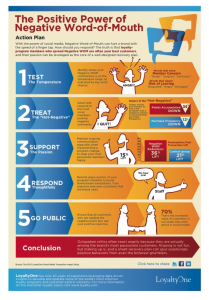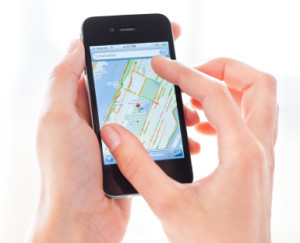Bryan Pearson's Blog, page 43
September 9, 2013
Packaging the Perfect Customer Experience, with Bubble Wrap and Relevance
 Sometimes we get so preoccupied trying to build loyalty in the obvious places that we overlook the small, critical events, like when that package arrives at the loading dock or someone’s door. But that “moment of truth,” if delivered in a pitch-perfect way, may be the one event that ensures emotional engagement.
Sometimes we get so preoccupied trying to build loyalty in the obvious places that we overlook the small, critical events, like when that package arrives at the loading dock or someone’s door. But that “moment of truth,” if delivered in a pitch-perfect way, may be the one event that ensures emotional engagement.
The team at FifthGear knows the significance of this moment well. The Indianapolis-based company, which provides order fulfillment, contact center and marketing services to retailers, recently shared this infographic with me.
It is a thoughtful, step-by-step process to delivering more than an order, but a great experience – by involving the extended team, knowing when to upgrade and treating returns as opportunities. And it is an important process, because getting the shipping right is oftentimes the price of entry to a long-term customer relationship. Once that is accomplished, the brand has the opportunity to further distinguish itself through other service features.
The best part: These loyalty lessons can be extended from the business-to-business relationship to a business-to-consumer relationship.
It’s a strong reminder that even the most straightforward everyday tasks, such as filling a box with a widget, can be used to create “wow” experiences with customers. No amount of bubble wrap will compensate for a botched order.
To see the full infographic online, visit http://www.infifthgear.com/order-fulfillment-resource/.
September 4, 2013
September 4: Loyalty Links & Likes
 Here are a few loyalty links that caught my eye this week.
Here are a few loyalty links that caught my eye this week.
1. Loyalty Programs Make the Small Screen – COLLOQUY
How some home entertainment companies are turning to loyalty initiatives and customer data to gain the competitive edge.
2. PerkStreet Rewards Vanish Without a Trace – LowCards.com
An online rewards-based bank has shut down leaving more than $1 million in rewards non-redeemable for customers.
3. Retail Marketing: Loyalty Is a Two-Way Street – The Guardian
The story shares loyalty program lessons from the UK’s leading DIY and garden center retailer B&Q.
4. Restaurant Loyalty Programs Pay Off in Surprising Ways – Pizza Marketplace.com
Pizza chain study shows benefit to sophisticated restaurant loyalty programs.
5. Tesco Clubcard vs. Nectar: Best Loyalty Schemes – The Telegraph
Readers weigh in on their loyalty card usage and each program’s offerings are revealed.
September 3, 2013
Turning a Frown Upside Down – How Negative WOM Can Help Your Brand
 The old phrase goes, “there is no such thing as bad publicity.” Now research shows there may be no such thing as bad word of mouth.
The old phrase goes, “there is no such thing as bad publicity.” Now research shows there may be no such thing as bad word of mouth.
A July report by our company, LoyaltyOne, and researchers at Northwestern University shows that negative word of mouth may actually indicate brand passion and lead to increased sales – if acted upon appropriately and quickly. Further, potentially negative experiences and comments can be translated into enhanced brand engagement and, in the case of loyalty programs, increased redemptions.
As the report, “The Positive Power of Negative Word-of-Mouth,” puts it, “The very instance of negative engagement is both a warning and, when best practices are employed, an opportunity.”
The study relies on a 2011 event when the AIR MILES Reward Program, operated by LoyaltyOne, made a couple program changes. One of these changes affected guidelines for reward miles redemption, a sensitive area for loyalty customers.
Realizing this, and knowing that engaged members tend to express their opinions when program rules change, LoyaltyOne paid close attention to shared member commentary on its community website. We worked with researchers and linguistic analysts from Northwestern University’s Medill IMC Spiegel Research Initiative to examine posts related to the program’s changes.
We did expect some verbal pushback, but were surprised by actual member activity afterward.
First, LoyaltyOne determined that those members who posted comments were generally more valuable customers – they were 70 percent more actively engaged with the AIR MILES program than those who did not post. So their negative comments stemmed from their emotional connection with the brand or, as the report puts it, they were “more passionate in expressing their opinions.”
Passion can lead to activity, and it did. About one third of those who posted comments made redemptions afterward. They also increased their collection activity by 36 percent. That compares with a 21 percent lift among redeemers in the control group.
How do we account for such positive results? During the commentary period, LoyaltyOne responded to specific questions and clarified any inaccuracies when they were posted. This is a critical point of the research: LoyaltyOne’s strategy at the time was to offset the negative perceptions and comments with simultaneous positive experiences, basically exposing our most engaged members to the core values that initially attracted them to the brand.
Through the research, we learned that we could test the loyalty of even emotionally engaged consumers. It is up to us to monitor the relationship regularly and reinforce the elements that make it positive. This goes double when implementing change.
If we have the data, and the resources to launch a timely response plan that is genuinely worded, we can turn negative word of mouth into good publicity and improved business. That’s not an old phrase – that’s just smart marketing.
August 28, 2013
August 28: Loyalty Links & Likes
 Here are a few loyalty links that caught my eye this week.
Here are a few loyalty links that caught my eye this week.
1. Nando’s Overhauls Loyalty Scheme to Take Marketing to the ‘Next Level’ – Marketing Week
The Portuguese restaurant chain has upgraded from its paper-based program to a new card and revamped mobile app that will let Nando’s capitalize on data.
2. University Loyalty Programs Tap Into Profitable Student Market – COLLOQUY
A look into how universities are using loyalty programs to spur student engagement and improve marketing efforts.
3. I Hate Your Brand: How Negative Word-of-Mouth Can Actually Increase Positive Engagement – tnooz
The story shares results of a LoyaltyOne study that looked at negative word-of-mouth and loyalty program engagement and redemptions.
4. Is Sears Holdings’ Loyalty Program Helping or Hurting It? – AdAge
As Sears reports a second quarter earnings loss, the Shop Your Way rewards program is put under a microscope.
5. ‘Airline Loyalty Programs Should Encourage Real Loyalty.’ Really? – Chicago Tribune
The author questions findings of a recent frequent flyer study from Deloitte and Touche that claims airline programs aren’t as effective as they could be.
August 26, 2013
Engagement Checked In with Aloft-y Idea
 Aloft Hotels is well known for its communal atmosphere, its hip bars and its grab-and-go snacks. Now it will also be known for its loyalty card, which is offering grab-and-go registration.
Aloft Hotels is well known for its communal atmosphere, its hip bars and its grab-and-go snacks. Now it will also be known for its loyalty card, which is offering grab-and-go registration.
The boutique hotel chain, part of Starwood Hotels & Resorts, has launched a service called Smart Check-In. The program is exclusive to select Aloft locations and, like the Aloft experience, is engineered to provide optimum travel freedom, because it allows those staying at the hotel to completely bypass the front desk.
The service is available to selected guests who are notified by email. Those who opt in will receive an Aloft-branded Starwood Preferred Guest (SPG) card, which doubles as a room key. On the day of arrival, Aloft sends a message containing the room number to the guest’s smart phone or mobile device. When the guest arrives, he or she can walk right by check-in and go directly to the room. One touch of the SPG card to the door and viola! The room is unlocked and the guest is automatically checked in.
Not only is this a luxury – for many of us frequent travelers, it responds to a pressing need. Attaining speed and convenience is one of the biggest challenges we face in our hectic, deadline-driven schedules. What better way to enhance the experience and add value to a loyalty card than by eliminating even small diversions?
But the service also is really smart from a feedback and improvement standpoint. As part of this invitation-only program, Aloft also is asking members to fill out a short survey following each stay. Through the surveys, it can record experiences with the Smart Check-In program, likely so it can make needed modifications when and where necessary. Further, the shared responses will help Aloft better understand its guests and service their anticipated needs.
Smart Check-In serves an anticipated need in loyalty, as well. With every American household enrolled in almost 22 loyalty programs but active in less than 10, according to the 2013 COLLOQUY Loyalty Census, loyalty marketers are in a foot race to prove why they should remain in the consumer’s wallet. Aloft has answered this challenge by giving actual utility to its loyalty card, enabling it to double as a room key and instant check-in device.
With these technological features, Aloft is thinking of new ways to add value and enhance the experience through basic process improvements. Now that’s a traditional approach to a lofty modern problem.
August 21, 2013
August 21: Loyalty Links & Likes
 Here are a few loyalty links that caught my eye this week.
Here are a few loyalty links that caught my eye this week.
1. For Frequent Fliers, Airline Loyalty is Fleeting – USA Today
Story shares results from a new survey that investigates customer satisfaction and loyalty with airlines.
2. Triggering Customer Fascination – COLLOQUY
A Q&A with Sally Hogshead, author of Fascinate: Your 7 Triggers to Persuasion and Captivation, that reveals how companies can increase the appeal of loyalty programs.
3. How to Use Social Media Listening to Build Brand Loyalty – Huffington Post
The author discusses how engaging with customers via social media channels can boost brand loyalty.
4. Tesco Banks on Loyalty to Beat Netflix in U.K. Movie War: Retail – Bloomberg Businessweek
Tesco’s streaming and digital download service can be tied to a loyalty program, giving it an edge of competitors.
5. Restaurant Loyalty Rewards ROI: Real Results From Real Restaurants – RestaurantNews.com
How loyalty is paying off for a variety of restaurants and how other eateries can harness its power, too.
August 19, 2013
Netflix Uncovers Clue to Customer Preferences
 Call it the case of the mysterious movie preferences.
Call it the case of the mysterious movie preferences.
For the past several months, looking at my Netflix viewing options was like being confronted by a rogue Amazon recommendation engine. Instead of offering me the kinds of programming I prefer, such as “House of Cards” and “Star Trek: Next Generation,” I’ve been subjected to “H2O: Just Add Water” and “Glee.”
In other words, Netflix has been suggesting my kids’ viewing choices to me. While in some cases that is OK – we do share a passion for the BBC’s “Sherlock Holmes” – their tastes in other programming are not what I’d call entertainment. We were at risk of a brand-relationship rift.
Then I got an email from Netflix that changed all that. With a few thoughtful entries on our computers (phones or iPads), we could create individual personalities, with preferences, for every person in my household, at no extra fee.
“No longer will kids, a significant other, roommates or guests wreak havoc on your Netflix suggestions,” the message told me. “Now, everyone in your home can have their own profile – their own Netflix experience built around the TV shows & movies they enjoy.”
Now doesn’t that make sense? Netflix has put the customer in charge, giving us the option to willingly share personal choices that it could then use to improve the brand experience. With this simple-to-attain information, Netflix can discern how each individual in one home interacts with its service, enabling it to better understand not only individuals, but also the household, down the road.
For instance, when my youngest leaves for university, you can bet the entertainment demands in my house will change dramatically, except perhaps during the summers when everyone is home. We’ll see if Netflix can be that nimble.
In the meantime, my next question (and plea) is this: How long before all other household entertainment memberships offer this kind of service? As Netflix has shown, it doesn’t take Sherlock Homes to solve the case of the varying household movie preferences.
It just takes a little bit of thinking like the customer.
August 14, 2013
August 14: Loyalty Links & Likes
 Here are a few loyalty links that caught my eye this week.
Here are a few loyalty links that caught my eye this week.
1. A Plot Twist With Dividends – COLLOQUY
How some of the world’s leading financial institutions are using their data and other resources to hold on to their best customers.
2. Roundy’s Introduces New Customer Loyalty Program – Milwaukee Business Journal
The Milwaukee-based grocer has updated its program to allow customers to upload coupons to their new cards.
3. Chicago Park District to Start Reward Points Program – Chicago Sun-Times
The story discusses the new Park Points program that allows park goers to earn points for participating in park programs.
4. Retailers Use Variety of Ways to Track Consumer Habits Through Loyalty Programs – Toledo Blade
How companies collect, use customer data and the issues that arise from poor privacy practices.
5. Rethinking Customer Loyalty –Marketing Magazine
The author uses recent findings to explain why loyalty programs need to be more customer-centric.
August 12, 2013
With Smartphone Geolocation and Trust, Local Beats Long Distance
 Here is one place mom and pops may have an advantage over major corporations – mobile tracking.
Here is one place mom and pops may have an advantage over major corporations – mobile tracking.
That is at least the case according to recent research that gauges how consumers use multiple media channels to connect with business. The research report, by advertising and media agency YP (formerly AT&T Interactive and AT&T Advertising Solutions), shows that overall, nine out of 10 consumers said they “almost always” have their mobile devices with them, and 61 percent permit mobile apps to access their location at least some of the time.
This represents a sharp difference in how consumers felt about geolocation just one year ago. According to a 2012 survey of 2,000 consumers conducted by LoyaltyOne, only 15 percent of the respondents said they would be willing to share their exact location via smartphone, even to a company they trusted. At the same time, 27 percent said they approved of retailers sending them offers via smartphone when near that merchant.
The disparity in these responses may come down to context – specifically, emotional attachments to neighborhoods and businesses. This is where the mom and pops come in. For instance, 37 percent of the respondents of the YP study said they would share their social media profile with a local restaurant, but only 27 percent would share it with a credit card company. The restaurant, being local, has more of a “face” than does the credit card company.
Which means it comes down to trust, a central finding of our own study, as well.
But all organizations have the wherewithal to level the field. Regardless of the technology, the key factor determining the consumer’s willingness to share personal information is the perceived value he or she will realize in return. The onus is on the company to use the information appropriately, with the purpose of delivering that enhanced experience. It doesn’t matter if the company is a national financial institution, a local pizza parlor or a channel marketer in the business-to-business space – the expectation will be the same.
August 7, 2013
August 7: Loyalty Links & Likes
 Here are a few loyalty links that caught my eye this week.
Here are a few loyalty links that caught my eye this week.
1. Dunkin’s Decision to Sweeten Loyalty Program Can Keep Company Competitive — COLLOQUY
The donut and coffee chain has plans to roll out its enhanced program later this year. This story explains the competitive pressure Dunkin’ faces.
2. AwardWallet Adds Back Tracking of American Airlines AAdvantage Miles — The Points Guy
American Airlines is partnering with AwardWallet to let rewards members manage miles and other loyalty program memberships in one place.
3. 15 Tips for Improving Customer Loyalty — Entrepreneur
Marketing experts offer advice to businesses looking to enhance customer loyalty.
4. How SMS Text Messaging Retains Customers & Drives Loyalty — Huffington Post
How mobile marketing can help businesses tailor messages to specific customers, affordably.
5. Surprising Facts About Customer Loyalty Marketing — MarketingProfs
An infographic that emphasizes the importance of marketing to most loyal customers.
Bryan Pearson's Blog
- Bryan Pearson's profile
- 4 followers



